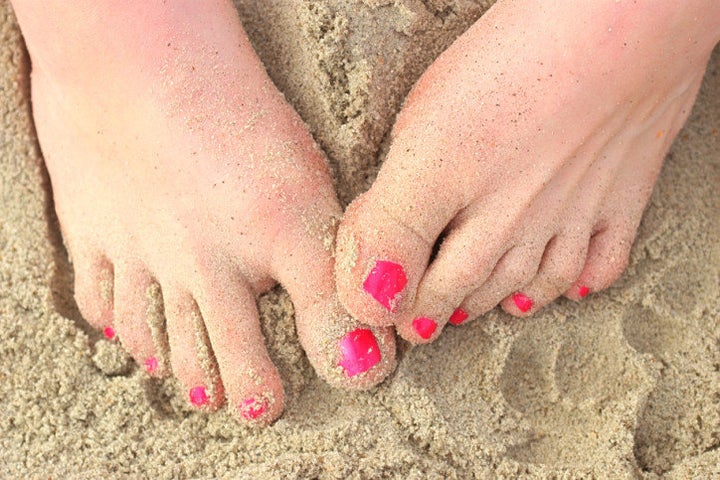
Belly buttons have lint,
Ears have wax, and
Toes have jam.
Do you know what really lurks between your toes?
Toe jam is common non-medical term used to describe the 'gunk' that accumulates between the toes. It is a combination of dead skin cells, sock debris, dirt, body oil residue, fungus and bacteria. Scabies, a parasitic skin mite, often burrows between the toes and is associated with poor hygiene.
Not all toe jam is the same, however. Believe it or not, toe jam can result in serious medical issues for some and should not be neglected.
Is it sock lint? Cotton socks may shred fibers (or fuzzies) that seem to find a resting place between the toes. Brand new socks are more likely to shed, so washing your socks before wearing them may limit this occurrence.
Is it skin a condition (dermatitis)? Some skin conditions (such as eczema, dyshidrosis and psoriasis) may result in flaking dry skin that may land between the toes and ball-up due to sweat. If you have skin problems on other parts of your body, then it is possible that it can manifest in the foot, as well, though diagnosis may be elusive and biopsies may be necessary. A variety of skin conditions may be managed with topical steroids. A word of caution: You should not place steroids on an infection, as it may cause a worse infection, so its important to have a proper diagnosis.
Is it a corn? Pressure spots between the toes develop a thickened layer of skin -- calluses and corns. A thick corn can become softened (soft corn) due to toe sweat/moisture and become gooey and smelly. This most commonly occurs between the fourth and fifth toes, and is associated with hammer toes. A neglected (or overgrown) corn may disturb the integrity of the skin and a secondary infection may settle in.
Is it an infection (bacterial and/or fungal)? Fungus and bacteria propagate in areas that are moist, warm, dark and enclosed -- making the area between the toes an optimal home. Bacteria and fungus may simply reside here as innocent bystanders in the mix of toe jam, or they can cause an infection.
- Fungal infections (athlete's foot) are often itchy and associated with scaling. Other areas of the foot may exhibit a rash as well, and fungal toe nails may be present. Fungal infections often respond to simple measures -- attention to foot hygiene, frequent sock changes, keeping the toe spaces dry, powders and over-the-counter anti-fungals. More severe fungal infections may benefit from a health care professional evaluation.
- Bacterial infections may become more serious and travel up the foot and leg. This is a specific concern in people with diabetes who are at risk for limb-threatening infections. Intact skin is the best defense at preventing infection. An infection may appear as any of the following: redness, swelling, pain, colored drainage and malodor. A worsening bacterial infection should not be taken lightly and is a medical emergency. A health care professional may require antibiotics and some infections may need surgery.
Is it a scabies infestation? Scabies is not particularly a component of toe jam per se, but occurs in the presence of poor hygiene. Scabies is a highly contagious mite infestation of the skin (through direct contact), where the mite burrows beneath the skin causing a pimply rash and itching. A severe form of scabies can cause massive thickening of the skin and is common amongst immunocompromised individuals. Medically prescribed creams may resolve the infestation, as well aggressive washing of items that have been in contact with the mites (ie. socks, towels, sheets, etc)
Take Home Point = Prevention. Do your best to prevent toe jam from accumulating and becoming associated with a medical problem or issue. Keep your feet clean. Wash thoroughly between the toes with soap and water and be sure to dry your feet.
Toe jam exists and is not always innocuous ...
~ Dr. Neal M. Blitz
To learn more about Dr. Blitz, please visit www.neablitz.com